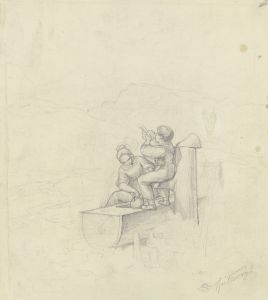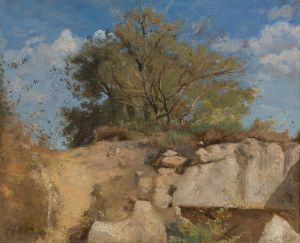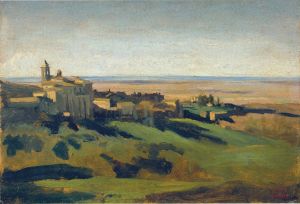
Marietta
A hand-painted replica of Jean-Baptiste-Camille Corot’s masterpiece Marietta, meticulously crafted by professional artists to capture the true essence of the original. Each piece is created with museum-quality canvas and rare mineral pigments, carefully painted by experienced artists with delicate brushstrokes and rich, layered colors to perfectly recreate the texture of the original artwork. Unlike machine-printed reproductions, this hand-painted version brings the painting to life, infused with the artist’s emotions and skill in every stroke. Whether for personal collection or home decoration, it instantly elevates the artistic atmosphere of any space.
Jean-Baptiste-Camille Corot was a prominent 19th-century French painter, known for his contributions to landscape painting and his role in bridging the Neoclassical tradition with the emerging Impressionist movement. Among his many works, "Marietta" is one of his notable portraits, showcasing his skill in capturing the essence and character of his subjects.
"Marietta" is a portrait painting created by Corot, though specific details about the exact date of its creation are not well-documented. Corot was known for his ability to infuse his portraits with a sense of intimacy and realism, characteristics that are evident in "Marietta." The painting reflects Corot's mature style, where he often combined a soft, atmospheric quality with a keen attention to detail.
In "Marietta," Corot employs a subdued color palette, a hallmark of his later works. This choice of colors creates a harmonious and tranquil mood, drawing the viewer's attention to the subject's expression and posture. The background is typically understated, allowing the focus to remain on Marietta herself. Corot's brushwork in this piece is delicate and precise, contributing to the lifelike representation of the subject.
Corot's portraits, including "Marietta," often depict individuals in a contemplative state, capturing a moment of introspection. This approach aligns with his broader artistic philosophy, which emphasized capturing the natural and unembellished beauty of his subjects. His portraits are less about idealizing the subject and more about presenting them as they are, with all their unique characteristics.
The identity of Marietta, the subject of this painting, is not widely documented, which is not uncommon for many of Corot's portraits. He often painted friends, acquaintances, or models, focusing on their personal essence rather than their social status or identity. This approach allowed Corot to explore the human condition in a more universal sense, transcending the specifics of the individual's background.
Corot's influence on the art world extends beyond his own works. He was a pivotal figure in the transition from traditional landscape painting to the more modern approaches that would define Impressionism. His ability to capture light and atmosphere in both landscapes and portraits inspired many younger artists, including the Impressionists, who admired his innovative techniques and his dedication to painting en plein air.
"Marietta" exemplifies Corot's mastery in portraiture, showcasing his ability to blend realism with a subtle emotional depth. The painting remains a testament to his skill in capturing the quiet dignity and inner life of his subjects. While Corot is primarily celebrated for his landscapes, works like "Marietta" highlight his versatility and his significant contributions to portrait painting.
Today, Jean-Baptiste-Camille Corot is remembered as one of the great masters of 19th-century art, and his works continue to be studied and admired for their technical brilliance and emotional resonance. "Marietta," like many of his portraits, offers a glimpse into the artist's unique ability to portray the human spirit with sensitivity and grace.


















